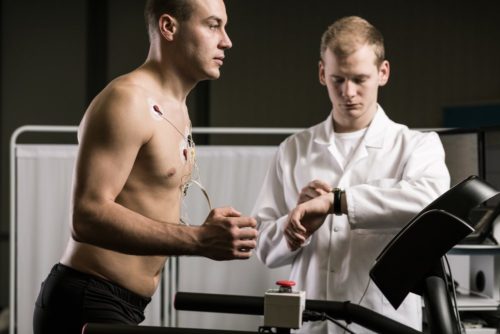Radiofrequency ablation is a procedure that can be used to correct heart arrhythmias in some patients. Because patients often come to Windward Heart for diagnostic testing prior to a radiofrequency ablation procedure, we wanted to provide information about when and why it is done and what you can expect from the procedure.
What is Atrial Fibrillation?
This common condition occurs when electrical signals delivered to the heart become abnormal, resulting in an irregular heartbeat. Also known as A-fib, the condition can increase your risk of developing blood clots since the irregular heartbeats can allow blood to pool in different areas of the top of the heart, called the atria. The blood clots can also increase your chances of a stroke, a serious and sometimes deadly event where a blood clot travels through the blood vessels to the brain.
Because serious complications can arise with atrial fibrillation, physicians usually recommend treatment for the condition. The first course of action may be to prescribe medication that regulates the heart rate or blood thinning medication to prevent clots from forming. If these approaches are not effective, the next course of action may be radiofrequency ablation to address the irregular heartbeat and restore a normal rhythm to the heart.
What is Radiofrequency Ablation?
Radiofrequency ablation is a procedure that uses narrow tubes called catheters to send energy directly to your heart. By threading the catheters through the blood vessels, patients can avoid open heart surgery to treat their arrhythmias. The energy that is delivered destroys small areas of tissue that have been identified as the cause of the arrhythmias. When the tissue is destroyed, a normal heartbeat can be restored.
Radiofrequency ablation performed in a hospital by a cardiologist that has special training in this procedure. Medication is administered to ensure you are relaxed throughout the procedure. The catheter is placed into the vessel in the leg using a very small incision in the groin. Ultrasound imaging is used to help guide the catheter through the vein to the heart.
Wires at the end of the catheter feature electrodes that record the electrical signals inside the heart. Once the irregular area is detected, the electrodes can also deliver energy to the area to ablate the area of tissue responsible for the irregularity. The procedure can last up to 3-6 hours, but the good news is patients will feel little if any discomfort throughout the process.
Making the Diagnosis
Before radiofrequency ablation is prescribed, a proper diagnosis must be made. That’s where Dr. Wong comes in. Dr. Wong and his staff at Windward Heart offer an electrocardiogram (EKG or ECG) to measure the heart’s electrical activity. This test may also be accompanied by a stress test to evaluate the circulation inside the heart or an echocardiogram, which uses ultrasound imaging to create an image from inside the heart to see exactly how blood is moving through.
All of the tests offered at Windward Vein are non-invasive and comfortable. Patients will receive full instructions on how to prepare for the test and what they can expect during and after the procedure. The results of these tests will provide us and your cardiologist with all the information necessary to make an accurate diagnosis and recommend the best treatment options for you. If you would like more information about the diagnostic testing available in our heart center, contact Windward Heart today at 808-797-2687.

